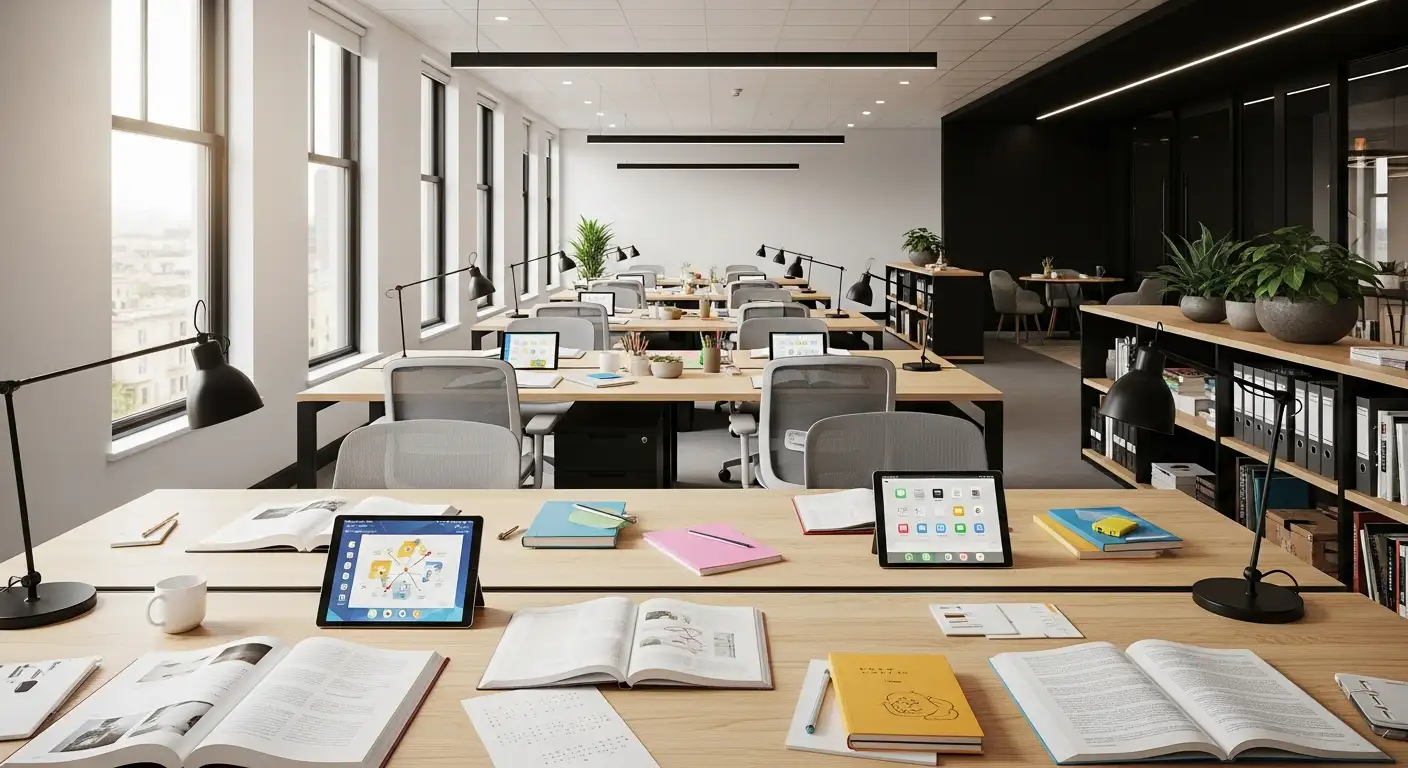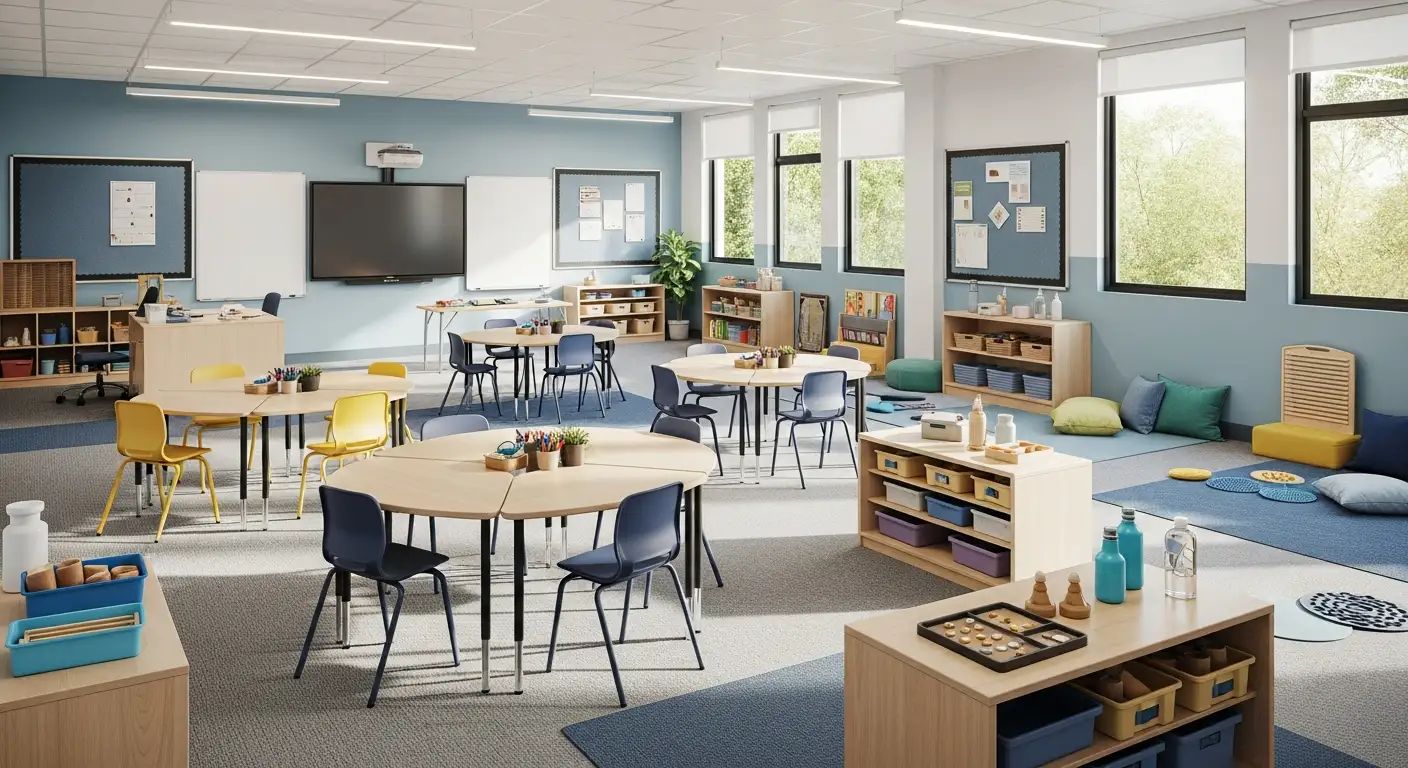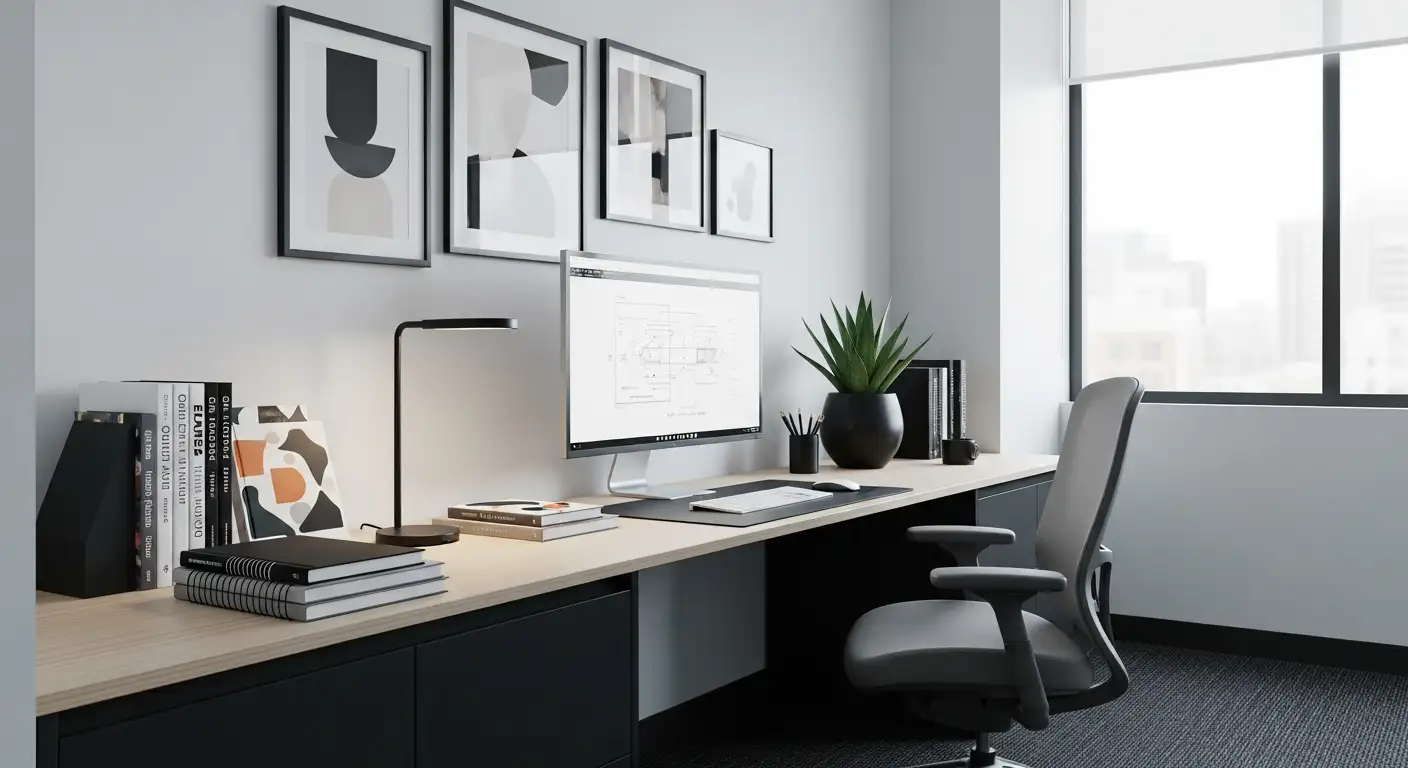Understanding the Role of ABA in Toilet Training
Toilet training is a vital developmental milestone that can be particularly challenging for children with autism. Applied Behavior Analysis (ABA) offers a structured, evidence-based approach to overcoming these challenges, helping children develop independence and confidence in self-care routines. This article explores how ABA therapy supports toilet training by employing tailored strategies, visual supports, and positive reinforcement to address specific behavioral and sensory difficulties.
Foundations of ABA in Toilet Training

How does ABA therapy support children with toilet training challenges?
Applied Behavior Analysis (ABA) therapy plays a crucial role in helping children with autism overcome difficulties with toilet training. It is an evidence-based approach that tailors interventions to each child's unique needs, emphasizing the importance of structure, patience, and positive reinforcement.
ABA breaks the toilet training process into small, manageable steps. Therapists and caregivers teach skills sequentially, such as recognizing the need to go, locating the bathroom, undressing, sitting on the toilet, and washing hands afterwards. Each step is taught with specific prompts, which are gradually faded to promote independence.
Visual supports like picture schedules, cue cards, and social stories are central tools. These aids help children understand and remember the sequence of toileting tasks, reducing sensory overload and anxiety.
Consistent routines are established, such as scheduled bathroom visits every 20 to 30 minutes initially, which help children recognize bodily signals and develop bladder and bowel control. Reinforcement is vital; children receive immediate praise, stickers, tokens, or preferred items for successful attempts, motivating them further.
Throughout therapy, data collection is used to track progress meticulously. This information guides the adjustment of strategies, ensuring they are effective and aligned with the child's evolving needs.
Gradually, prompts are faded as children become more confident, fostering internal motivation and self-reliance. This structured, patient approach reduces feelings of frustration and fear associated with toileting.
By focusing on positive reinforcement and tailored routines, ABA therapy not only teaches toileting skills but also helps alleviate anxiety and sensory sensitivities, making the process smoother and more successful for children with autism.
Techniques and Strategies Utilized in ABA Toilet Training

What techniques and strategies are used in ABA therapy for toilet training?
ABA therapy makes use of a comprehensive set of techniques tailored to meet each child's needs, making toilet training more effective and less stressful.
One of the fundamental strategies involves visual supports. These include visual schedules, picture cards, and social stories that break down the steps of toileting into manageable visual cues. Such tools help children understand what’s expected and can assist non-verbal children in communicating their toilet needs more effectively.
Positive reinforcement is a core element within ABA therapy. Therapists use praise, edible rewards, tokens, or points that can be exchanged for preferred items or activities. This encouragement motivates children to repeat successful toileting behaviors. It also helps create a positive emotional association with toilet use, fostering independence.
Prompting and fading are techniques employed to guide children through each step of toileting. Prompts may involve verbal cues, physical guidance, or visual cues, and are gradually reduced over time as the child gains confidence and independence. This gradual fading encourages children to perform tasks with less assistance, promoting autonomous behavior.
Scheduled bathroom visits involve routine checks every 20 to 30 minutes initially, which can be extended as children gain control. These scheduled routines help children recognize bodily sensations and establish consistent habits.
Desensitization and equipment modifications are also critical, especially for children with sensory aversions. Using smaller potty chairs, footstools, or water-safe sensory toys makes the environment more comfortable. Gradual exposure to water sounds, textures, or flushing reduces anxiety and sensory sensitivities.
In addition to these core strategies, ABA therapists often incorporate modeling, peer demonstrations, and consider each child's unique preferences to enhance learning. Consistency across caregivers and settings is crucial, which is why therapists collaborate closely with families.
Overall, ABA therapy combines these targeted techniques—visual supports, positive reinforcement, prompting, scheduled routines, and sensory modifications—to build toilet skills systematically and compassionately, ensuring children develop confidence and independence in their toileting routines.
Signs of Readiness and Essential Steps in ABA-Assisted Toilet Training

What are the typical steps and signs of readiness for toilet training using ABA techniques?
When starting ABA-based toilet training, professionals and caregivers first assess if a child shows signs of readiness. Key indicators include the child staying dry for several hours, which suggests bladder control potential. Motor skills are also important; children should be able to pull their clothes up and down, indicating a level of independence necessary for toileting.
Following simple instructions, such as 'sit on the potty,' is a critical behavioral sign. Additionally, the child should demonstrate awareness of bodily signals, like recognizing the need to urinate or have a bowel movement, which can be observed through increased focus on the bathroom or discomfort when dirty.
Desensitization to sitting on the toilet plays a vital role. This involves gradually introducing the child to sitting calmly on the potty, starting with short durations and slowly increasing sit-time as comfort builds. Use of visual supports or social stories can aid in reducing any anxiety related to the toilet.
ABA routines are structured around systematic, step-by-step processes. Initially, scheduled bathroom visits are planned every 10 to 15 minutes to help the child associate timing with toileting. Reinforcements such as praise or preferred treats motivate the child during successful attempts.
Prompts, whether verbal or physical, assist children in completing each step, from pulling down clothing to wiping and flushing. Fairly soon, prompts should be faded to foster independence. During training, accidents are handled calmly and without punishment, emphasizing neutrality and reassurance.
For children with communication difficulties, visual aids like picture schedules or PECS (Picture Exchange Communication System) are invaluable. These tools encourage requesting bathroom breaks and expressing needs.
Ongoing monitoring of the child's progress, signs of discomfort, or resistance helps tailor the training plan. If medical or emotional issues arise, addressing these barriers early ensures the process remains effective and supportive.
In summary, successful ABA-assisted potty training hinges on recognizing readiness signs, desensitizing and familiarizing the child with the routine, using detailed yet flexible step-by-step procedures, and consistently applying prompts and reinforcement to motivate and guide the child toward independence.
Effectiveness of ABA in Addressing Toilet Training Challenges

How effective is ABA therapy in addressing potty training issues in children with autism?
Applied Behavior Analysis (ABA) therapy has proven to be a highly effective approach for helping children with autism master toilet training. This evidence-based method focuses on creating structured, individualized training plans that use positive reinforcement, visual supports, and step-by-step instruction to teach essential bathroom skills.
Research indicates that children undergoing ABA-based potty training programs often make significant progress. Many children achieve full independence in toileting within an average of 56 to 96 days. This timeframe depends on various factors like the child's initial skills, sensory sensitivities, communication abilities, and consistency in implementation.
ABA programs utilize methods such as scheduled bathroom visits, prompts, discrete trial training, and behavior analysis to break down complex tasks—like wiping or flushing—into manageable steps. These techniques are often delivered by trained paraprofessionals or therapists, sometimes within school environments, making regular practice more accessible.
Successful programs begin with assessing each child's readiness, including physical, behavioral, and communication skills. They involve continuous data collection, which helps therapists adjust strategies to meet evolving needs and track progress meticulously.
Overall, ABA's scientific foundation and flexibility make it a trusted and effective approach for addressing the common potty training challenges faced by children with autism. It promotes meaningful skill acquisition, confidence, and independence, laying a foundation for other self-care skills and enhancing overall quality of life.
Guidance for Parents and Caregivers on Implementing ABA Techniques

How can parents and caregivers be guided in implementing ABA-based toilet training methods?
Parents and caregivers play a crucial role in successful toilet training for children with autism. Implementing ABA techniques involves creating a structured, personalized approach that caters to the child's unique needs and readiness.
A primary step is developing an individualized plan that breaks down the process into small, manageable steps. Visual supports, such as picture schedules and social stories, are invaluable tools. These aids visually outline each step of toileting, helping children understand what is expected and reducing anxiety.
Consistent routines are essential. Scheduled bathroom visits—initially every 20 to 30 minutes—encourage children to recognize bodily cues. Prompts, whether verbal, visual, or physical, guide the child through each step, with prompts gradually fading to promote independence.
Positive reinforcement is central to ABA. Using rewards like praise, stickers, or preferred items for successful attempts motivates children. Immediate feedback after successful toileting encourages the behavior to repeat.
Desensitization to the toilet environment helps reduce fears or aversions. This can involve gradual exposure, such as sitting on the potty with clothes on, then gradually increasing the duration.
Tracking progress through data collection enables caregivers and therapists to adjust strategies as needed. This ongoing analysis ensures the approach remains responsive to the child’s development.
Collaboration with trained professionals, such as Board Certified Behavior Analysts (BCBAs), provides expert guidance. These specialists help refine strategies, troubleshoot resistance, and deal with challenges like accidents or anxiety.
Handling resistance and accidents involves maintaining patience and a calm demeanor. It's important to reinforce effort rather than perfection, avoid punishment, and celebrate small successes.
Including the child in routine activities, maintaining consistency across caregivers and settings, and gradually increasing independence build confidence and success.
In summary, guiding parents and caregivers involves providing a clear, flexible plan rooted in ABA principles, supported by visual tools, consistent practice, positive reinforcement, and ongoing professional collaboration. This comprehensive approach fosters a positive experience and steady progress toward toilet independence.
Addressing Autism-Specific Challenges in Toilet Training
How does ABA address specific autism-related challenges in toilet training?
Applied Behavior Analysis (ABA) offers a tailored approach to overcoming the unique hurdles faced by children with autism during toilet training. Since children with autism often encounter sensory sensitivities, communication challenges, and behavioral resistance, ABA programs are designed to address these issues directly.
To start, ABA therapists customize strategies based on each child's sensory profile. For children who experience sensory overload, adaptations such as using soft, comfortable toilet seats or allowing sensory breaks can reduce discomfort. Environment modifications, like reducing noise or visual clutter, help create a calming toilet training area.
Communication difficulties are addressed through visual supports including picture schedules, social stories, and PECS (Picture Exchange Communication System). These tools help children understand each step of the process and express their toileting needs effectively.
Structured routines are vital. ABA emphasizes consistent schedules for bathroom visits, often using timers or visual cues to prompt toileting at regular intervals. This predictability helps reduce anxiety and fosters independence.
Reinforcement is another cornerstone. Children receive immediate praise, tokens, or preferred items for successful attempts, which encourages continued effort. The focus is on positive reinforcement rather than punitive measures, which can increase resistance or fear.
Sensory adaptations also include gradually introducing water sounds, textures, and flushing to desensitize children and lessen fears associated with these stimuli. Consistent, gentle exposure helps children build confidence and comfort.
ABA therapists continuously assess progress and adjust strategies. They may break down complex steps into smaller, manageable parts, use prompting and fading techniques, and involve caregivers to ensure the child's success across different settings.
This comprehensive, individualized approach helps children with autism develop essential toilet skills in a supportive and encouraging environment, promoting independence and self-confidence.
Innovations and Emerging Technologies in ABA Toilet Training
Sensor-based Systems
Recent advances in sensor technology have revolutionized how ABA therapy supports toilet training for children with autism. Sensor-based systems include smart mats, wearable devices, and bathroom sensors that monitor urinary or bowel activity. These devices can detect when a child uses the toilet, providing real-time data to therapists and caregivers. This information allows for more precise tracking of progress and frequency of bathroom use, making it easier to identify patterns or issues.
Some sensor systems can alert caregivers when the child has used the toilet, enabling immediate positive reinforcement or prompting. These systems help foster independence by reducing reliance on constant supervision and encouraging children to recognize bodily cues.
AI-assisted Interventions
Artificial intelligence (AI) is increasingly being integrated into ABA toilet training programs to personalize interventions. AI-powered apps and devices can analyze data from sensor systems, behavioral sessions, and caregiver inputs to create tailored training plans. These tools help therapists adjust prompts, reinforcement strategies, and schedules based on the child’s progress.
AI technology also supports the development of social stories, visual schedules, and prompting systems that adapt dynamically to each child's needs. For example, AI can suggest the optimal timing for bathroom breaks or identify specific triggers that lead to resistance or refusal, enabling a more proactive approach.
Visual Cues and Reminders
Visual supports remain a fundamental component of ABA toilet training. Modern systems incorporate digital visual cues and reminders to promote consistency and understanding. For instance, tablet-based visual schedules display step-by-step instructions for using the bathroom, reminding children of what to do next.
Digital timers and cue cards with pictures or symbols can remind children when it’s time to try for a bathroom visit, reducing anxiety and encouraging routine adherence. These cues not only help children remember the sequence of toileting tasks but also serve as consistent prompts that reinforce routine and independence.
Combining Technologies for Optimal Results
Integrating sensor-based systems, AI-assisted interventions, and visual cues creates a comprehensive approach to toilet training. For example, a child may wear a sensor that detects movement or moisture, while an AI system analyzes this data and signals a visual reminder on a tablet or communication device.
Such a multi-modal approach ensures continuous feedback and support, reducing frustration and reinforcing positive behaviors. This integration also allows for data collection that informs ongoing adjustments to the intervention plan, resulting in a more efficient and customized training experience.
| Technology Type | Description | Benefits | Examples |
|---|---|---|---|
| Sensor-based systems | Smart mats, wearable sensors, bathroom sensors | Detect usage, provide real-time feedback | Smart toilet mats, moisture detectors |
| AI-assisted interventions | Data analysis, adaptive prompts, personalized plans | Tailor strategies, optimize timing | AI apps for behavioral monitoring |
| Visual cues and reminders | Digital schedules, timers, cue cards | Reinforce routines, reduce anxiety | Tablet visual schedules, electronic timers |
By leveraging these innovative tools, ABA therapists and caregivers can better support children with autism in achieving toilet training independence. These emerging technologies enhance the effectiveness of traditional ABA techniques, making the process more engaging, precise, and individualized.
Conclusion: Paving the Path Towards Independence
The journey to successful toilet training for children with autism involves a combination of patience, understanding, and structured support. ABA therapy emerges as a powerful approach, using positive reinforcement and step-by-step procedures to teach essential bathroom skills. This evidence-based method breaks down complex tasks into manageable steps, making learning more accessible and less overwhelming for children.
A foundational element of effective ABA-based toilet training is a structured routine. Visual supports such as picture schedules, social stories, and visual cues help children grasp the sequence of toileting activities while reducing anxiety and sensory sensitivities. Carefully planned routines of scheduled bathroom visits, starting with frequent intervals, help children recognize bodily sensations and develop independence.
The role of professionals, especially Board Certified Behavior Analysts (BCBAs), and caregivers is vital in customizing strategies to meet each child's unique needs. Thorough assessments, including observation of medical issues like constipation and behavioral indicators of readiness, set the stage for success. Behavioral analysis guides intervention, addressing challenges like toilet refusal, accidents, or sensory aversions effectively.
Supporting families and caregivers is equally crucial. Their involvement in implementing consistent routines, using visual supports, and celebrating small successes fosters confidence and motivates children. Techniques such as immediate praise, reward systems like tokens or stickers, and gradual fading of prompts promote internal motivation.
Ultimately, fostering autonomy in toileting skills contributes significantly to a child's overall development, independence, and self-esteem. As children gain mastery over bathroom routines, they develop confidence that extends beyond toileting to other areas of life. Combining dedicated professional support with consistent caregiving strategies creates a nurturing environment that encourages children with autism to reach this important developmental milestone.
By embracing an individualized, positive, and structured approach, caregivers and professionals can effectively guide children through the challenges of toilet training, paving the way for greater independence and confidence in their daily lives.
Empowering Future with Toilet Training Support
ABA therapy offers a comprehensive, adaptable, and scientifically supported approach to overcoming toilet training challenges in children with autism. By integrating visual supports, positive reinforcement, individualized routines, and ongoing assessment, ABA helps children develop essential self-care skills, fostering independence, confidence, and dignity. Collaboration between therapists, parents, and caregivers is crucial to tailoring interventions, monitoring progress, and addressing unique needs. Ultimately, ABA not only facilitates successful toilet training but also contributes to the child’s overall development, paving the way for a more autonomous future.
References
- Fort Myers ABA Therapy Helps Target Toilet Training
- How to Manage Autism and Potty Training Issues - Jade ABA Therapy
- Potty Training for Autism - Proven Steps for Success
- Toilet Training for Kids Using ABA Therapy - ABATherapistJobs.com
- Does ABA Teach Potty Training? Expert Insights Revealed
- Toilet Training Guide For Kids With Autism | Tips & Checklist
- Potty Training In Autism: 5 Tips To Teach New Habits



